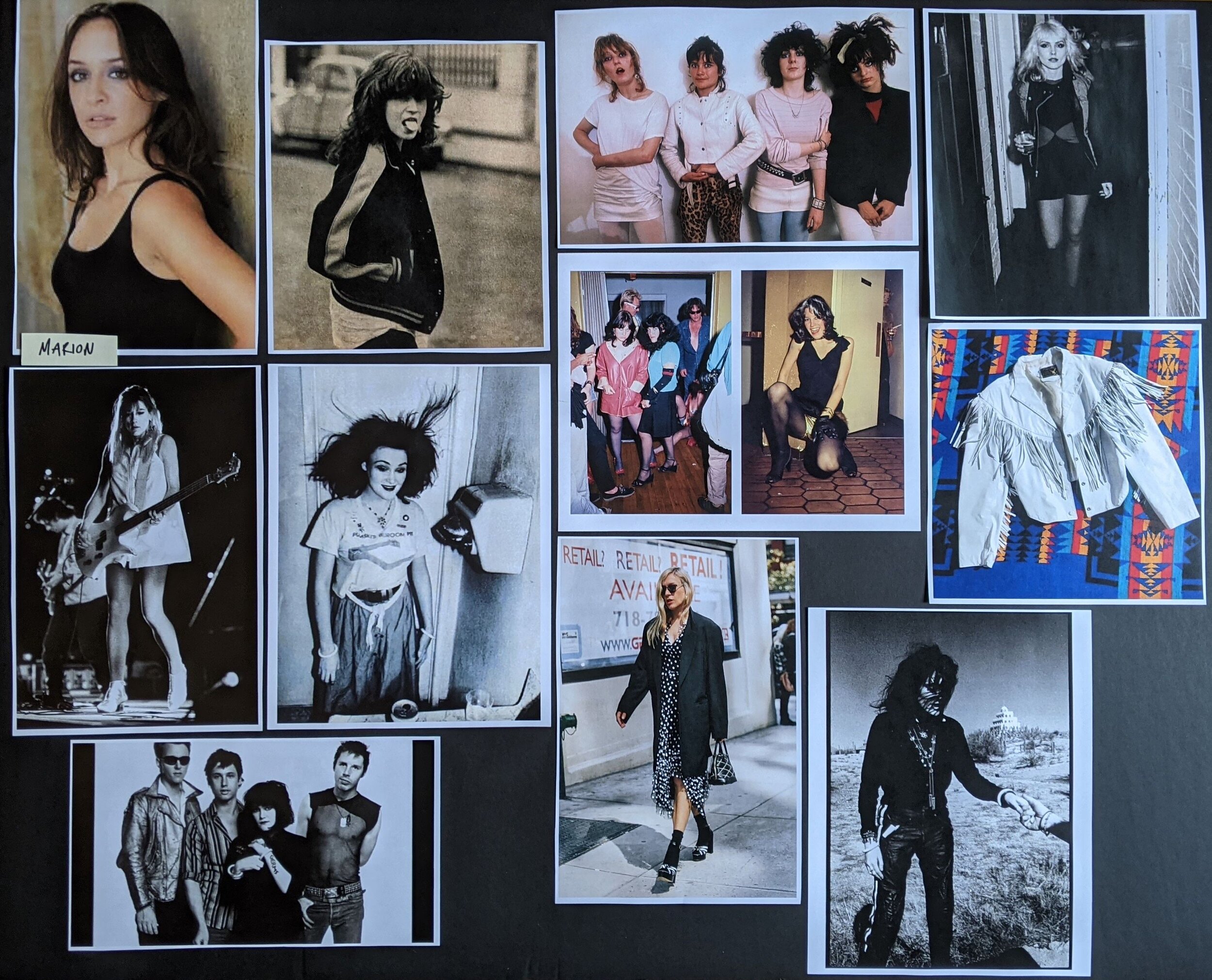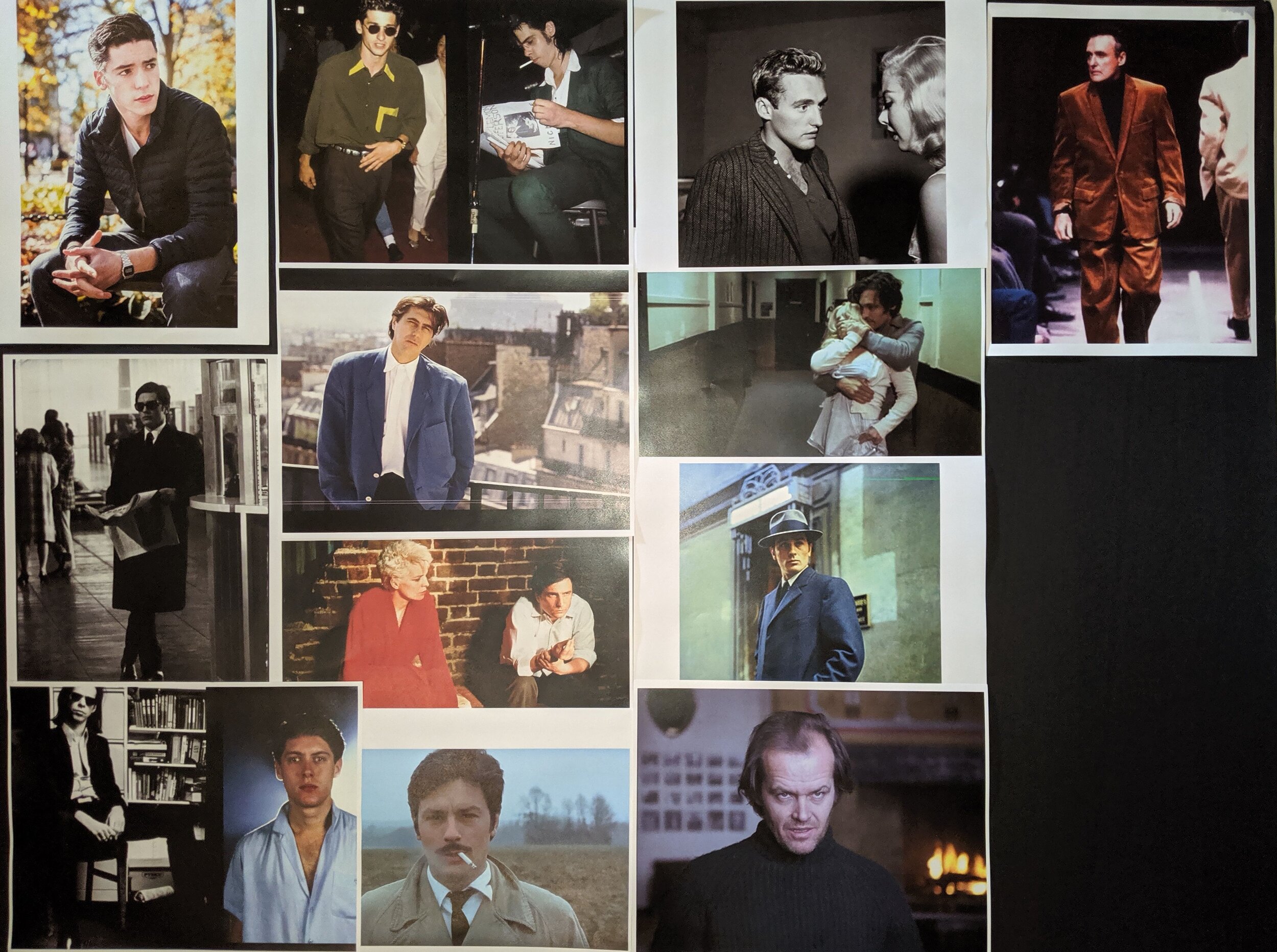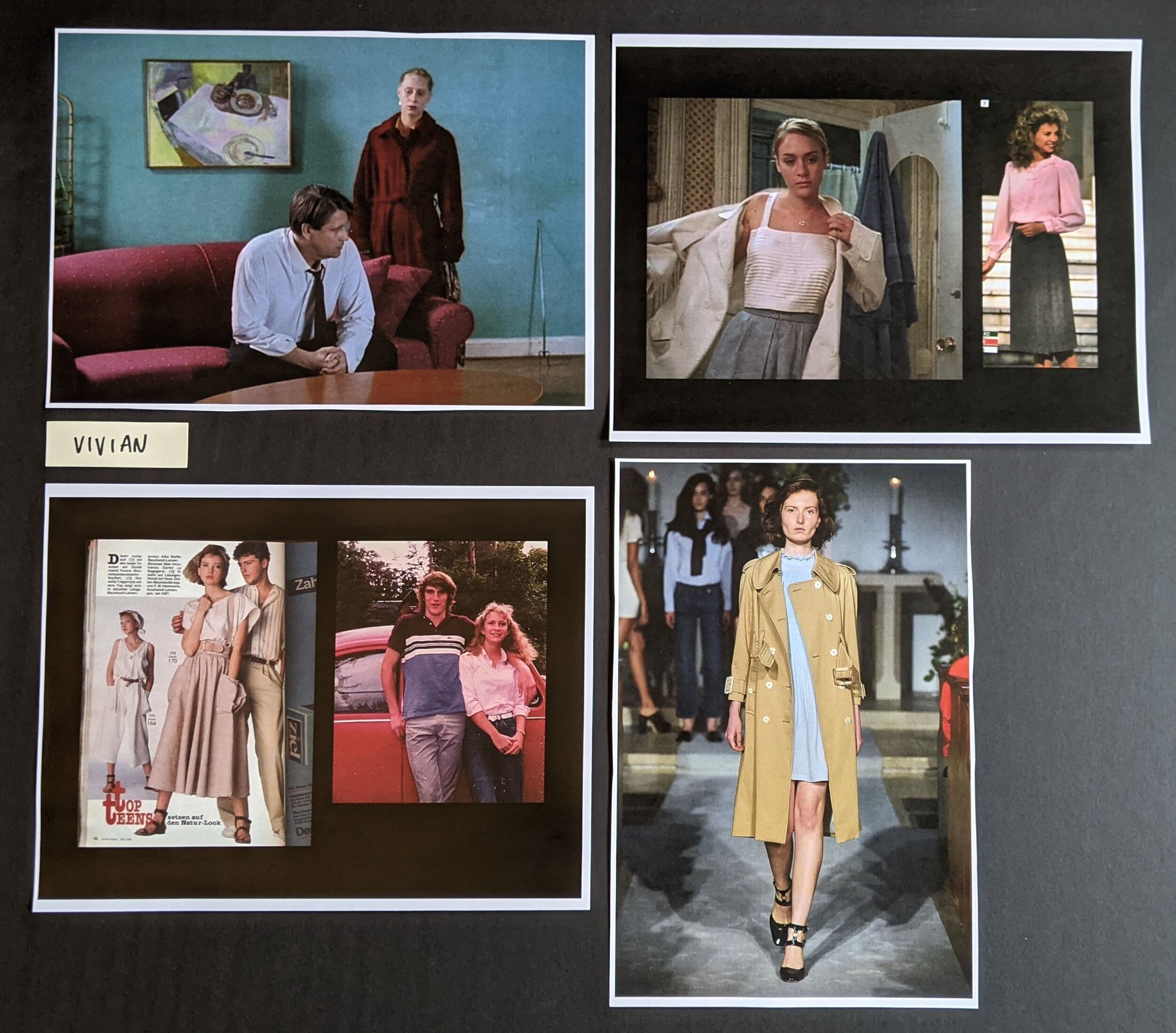Perfect 80s Flair and Cinematic Gold is Achieved with the Sundance Film Festival Hit "Superior"
Six years later viewers were pleasantly surprised to see a film that seemed a tad familiar. Returning to the Sundance Film Festival with her feature debut—a continuation of her 2015 short, Superior—director Erin Vassilopoulos works with the same sister actresses (Alessandra and Ani Mesa) to further her exploration of identity. We’ll just say it was well worth the wait!
Photo Courtesy of Sundance Film Festival
Superior is a visually luscious thriller that keeps the tension tight as the narrative navigates between violent memories and two sisters rediscovering their bond. From the music to the set design, every detail oozes style and intention—and heralds the undeniable arrival of a new voice in American independent cinema.
Co-written by Vassilopoulos and Alessandra Mesa, furthers the short that graced Sundance Film Festival in 2015. “We didn’t want to just turn the short into a feature,” said Vassilopoulos, who was joined in Deadline’s Sundance Studio by Alessandra & Ani Mesa and their co-stars Pico Alexander and Jake Hoffman. “The short is kind of a prologue.”
When Marian is on the run, she goes to the only place she knows is safe: her childhood home. She is greeted by her estranged sister, Vivian, a stay-at-home housewife struggling to conceive and on the verge of a failing marriage. Though the two are identical twins, they live opposite lives. Marian’s mysterious return disrupts Vivian’s small-town routine, and the sisters must learn to reconnect and reconcile. When Marian's haunting past finally catches up to her, their separate worlds collide, catapulting both sisters into grave danger.
Identify LA got the chance to speak with the cinematographer and costume designer from US Dramatic Sundance select, Superior, on all things Sundance and the key components on bringing this film to life. The film is dripping with pure ‘80s flair and we are loving every bit of it.
The following has been edited for continuity.
Perfect 80s Flair and Cinematic Gold is Achieved with the Sundance Film Festival Hit "Superior". Photo Courtesy of Mia Cioffi Henry
Identify LA: How important are cinematography and costume design, and how do they help to tell the story of the film?
Mia Cioffi Henry: Cinematography for me is so much more than just the visual imagery of the film, it is the catalyst for feeling the characters and living the story. Good shots are not good because they fulfill a certain aesthetic itch, but because they further the story, pull you in and ask you to look closer at the characters and question what we know about what is taking place in front of us on the screen. Using cinematographic vernacular, we can make the audience connect or disconnect with a character’s experience, be sympathetic or judge them, play into the story or keep the audience at arm’s length, denying access. I feel tasked as a cinematographer to use images to further a character, clarify a psychology and convey a perspective that the audience can relate to.
Allison Pearce: Costume design is every garment seen on screen. Costumes are there to silently and visually support the actor’s performance and the character’s journey within the story, as well as detail their personality to the audience. It should feel natural and not forced. For that reason, it’s very psychological. When I read a script, I’m asking myself tons of questions, such as “where does this character live?” and “what do they do for a living?” “Would they dress for function vs fashion?” “Do they wear hand me downs?” “Do they care about the way they look?” Costume design is there to visually support the story through dress. And if your actors are top priority, then what they wear is just as important. Often, when I first speak with an actor on a project, discussing costumes is when they really start to embrace their character.
Mia Cioffi Henry and director Erin Vassilopoulos. Photo Courtesy of Mia Cioffi Henry
IDLA: How did the two of you work together to make sure the finished project was aesthetically pleasing?
MCH: I love working with Allie because she understands story and she understands character and how we can go on a journey together through visual choices. We shared a lot of colors and textures together and with our director, Erin Vassilopoulos, and production designer, Maite Perez-Niaves, creating an ongoing dialogue throughout production so that everything stayed connected and in the same world. We shared common references, Rosemary’s Baby, Red Desert, that brought us into the color and texture conversations. I have a background in art and costume departments, so I love that kind of collaboration. I love showing up at the fittings and listening in on the conversations about character and costume because it really enriches my own work and helps me highlight the choices that Allie is making.
AP: I remember the first time I met Mia. I was doing the first fitting with the twins, Ale and Ani. Mia came in the room and sat down and I’m thinking to myself “who IS this?”. I had never had a DP take such an interest in costumes before. So much so, that she’d show up to fittings whenever her schedule allowed. Turns out, Mia had worked in the wardrobe department in a previous life. That was just the beginning of our collaboration. It’s so refreshing to have a cinematographer available to costumes during fittings. I was able to visually show and explain my process while Mia and Erin were in the room with me and our actors. While we were shooting, we were always engaging in an on-going conversation about character in regard to costume, art, etc. Each room in the house was so different, both in color and texture. And since Mia shot Superior on film, it was super important to me to ask for her input on fabrics, cuts, silhouettes, and color. You don’t get playback when you’re working with film, so it’s best to go into shooting a scene being as prepared costume-wise as you possibly can.
Photo Courtesy of Mia Cioffi Henry
IDLA: What's the most challenging thing when it comes to this process?
MCH: I love prep, so I would always like more time to be all together getting on the same page in the pre-production process. I would love more time with the department heads to hear what their creative process is and getting to match that with my own so that we can be collaborating in the same space together. It is so hard at the beginning of a film because we are taken in so many different directions. There is so much that needs to be answered all at the same time, and I long for a prep process that has a little more room to breathe, time to respond to the material and kind of dream what the film is going to be without so much pressure. But that will probably never happen! Independent filmmaking is also so amazing for that whirlwind feeling. We were all just whisked off to Western NY and the magical world of Elmira, living and working together, it kind of turns into grown up summer camp! The stakes always feel very high at that point, because without a big studio backing you, we just have to get it right in the moment because we can’t really go back and fix it. Especially when you are shooting on film, as we were. And at the end of it all, we have to find peace with what we did. A film is a captured moment in time, that’s what makes it challenging, but also beautiful.
AP: I think once we start shooting, it can be really difficult to sit down with your collaborators and discuss next week’s work. When we’re working, we shoot out of order, so I really need to be super clear on each character’s arc in regard to their costumes. This project was unique because it stars two identical twins. During my process, I make a costume book that goes through the story scene by scene. And I add photos from fittings or on set in costume and collage them together to show where each character is visually, as well as what exactly is happening in that scene. This process is for me just as much as it is for everyone else involved in making the film. With Superior, we visually see Vivian and Marian trade places, switch clothes, and begin to mesh and weave their looks together. Their costumes were so important in telling the two characters apart, as well as showing the audience their psychological changes and range of emotion each goes through during the film. It was challenging at times to think “What would Marian wear if she’s playing Vivian?” The burgundy jumpsuit Marian picks out on Halloween night is a great example. To Marian, the jumpsuit is kind of rock n’ roll, a nod to her early looks in the film. At that moment, she’s not just putting on Vivian’s clothes but she’s beginning to develop her own version of her sister and herself. Color was just as important to me as fabric and texture. Marian is a musician, so her look was very inspired by bands and music from the 70s and 80s like X, Sonic Youth’s Kim Gordon, Blondie. Marian is white fringe, suede, embossed faux leather, studs, black and white, denim, and pops of red. Most of her costumes in the beginning are tight or menswear oversized. In juxtaposition, when we first see Vivian, her silhouettes are flouncy and a little fantastical with delicate touches. Vivian is inspired by a Daphne du Maurier character, or Mia Farrow in Rosemary’s Baby. Lots of neutrals paired with rich jewel tones, and more precious fabrics like silk, chiffon, knits, wool. It was challenging yet very thought-provoking to break down their familial estrangement from one another through costume.
IDLA: Allison, you took part in Black Bear which was at Sundance last year. In terms of experience, how does this year differ (besides being virtual).
AP: It’s actually an interesting coincidence. In Black Bear, there are also character costume switches like in Superior. Aubrey Plaza and Sarah Gadon’s characters switch costumes from the first half to the second half of the film. That project was very nature and environment-based for me. We filmed Black Bear in the Adirondacks and the greens of the landscape, blue and blacks of the lake, and neutrals and browns of the woods acted as a guide for the costumes. I think the whole tone of Black Bear was very understated and beneath the surface, whereas in Superior, I was encouraged to make very bold choices. So I think in regards to Sundance, the result was Black Bear’s reception was very focused on the actors’ performance. So far, it seems Superior’s reception is really highlighting our process as women collaborators to create such a vivid, rich, and colorful world that exists within the film.
IDLA: Anything else you'd like to add?
MCH: The feature film Superior, is based on the short by the same name which premiered at Sundance in 2015. These characters and the world have been living in my head since back when Erin and I shot the short together 8 years ago. I feel we have grown with them as creators and storytellers, and I am happy to share what they have been up to since we last checked in with them - I am so excited to share this film!
AP: As a costume designer, I love the absurd and uncanny, but I want the characters to feel real, unique and relatable at the same time. My hope is that even though we created a story where style and color are king, that the characters are still engaging and approachable.














